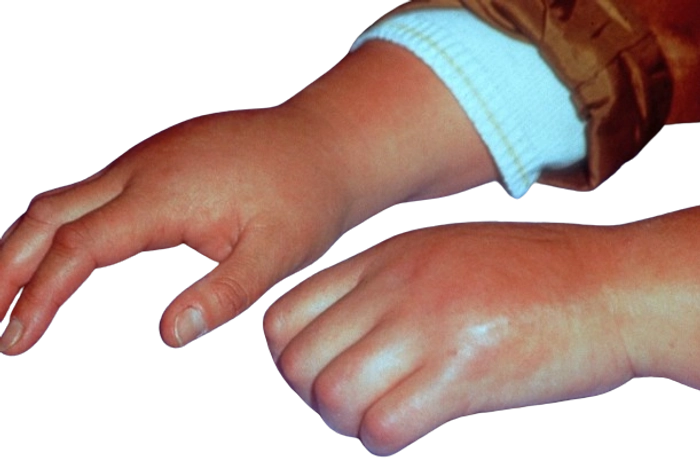Introduction
Sudeck dystrophy, also known as complex regional pain syndrome (CRPS), is a chronic pain condition that affects the limbs, typically following injury or trauma. It is characterized by severe and persistent pain, changes in skin color and temperature, and swelling in the affected area. At Dhyan Healthcare, we are committed to providing comprehensive care and effective treatment options for individuals dealing with Sudeck dystrophy.
What is Sudeck Dystrophy?
Sudeck dystrophy is a complex condition that involves dysfunction of the nervous system, leading to abnormal pain processing and inflammation. It typically occurs after an injury or trauma to the limbs, such as fractures, surgery, or sprains, but the exact cause is not fully understood. Sudeck dystrophy can affect anyone but is more common in women and individuals over the age of 50.
Causes and Risk Factors
The exact cause of Sudeck dystrophy is unknown, but it is believed to involve a combination of factors, including:
- Injury or Trauma: Sudeck dystrophy often develops following an injury or trauma to the limbs, such as fractures, surgery, or sprains.
- Nervous System Dysfunction: Dysfunction of the autonomic nervous system may contribute to the development of Sudeck dystrophy.
- Genetic Predisposition: Some individuals may have a genetic predisposition to developing Sudeck dystrophy.
- Immune System Dysfunction: Abnormal immune system responses may play a role in the development of Sudeck dystrophy.
Symptoms
The symptoms of Sudeck dystrophy can vary but commonly include:
- Severe Pain: Persistent and severe pain in the affected limb that may be burning, stabbing, or throbbing in nature.
- Changes in Skin Color: The skin may become red, blue, or purple in color, indicating changes in blood flow.
- Changes in Skin Temperature: The affected limb may feel warmer or colder than usual.
- Swelling and Sensitivity: Swelling, tenderness, and sensitivity to touch in the affected area.
- Stiffness and Muscle Weakness: Reduced range of motion and muscle weakness in the affected limb.
Diagnosis
Diagnosing Sudeck dystrophy involves:
- Medical History and Physical Examination: Your healthcare provider will review your symptoms and medical history, and perform a physical examination to assess the affected limb.
- Imaging Studies: X-rays, MRI, or bone scans may be ordered to evaluate changes in bone density and assess the extent of tissue damage.
- Nerve Conduction Studies: Tests to evaluate nerve function and assess for any abnormalities in nerve signaling.
Treatment Options
The goal of treatment for Sudeck dystrophy is to relieve pain, improve function, and promote healing. Treatment options may include:
-
Medications:
- Pain Relievers: Over-the-counter or prescription pain relievers to manage pain and discomfort.
- Anti-inflammatories: Nonsteroidal anti-inflammatory drugs (NSAIDs) to reduce inflammation and swelling.
- Antidepressants or Anticonvulsants: Medications that affect nerve signaling to help relieve pain.
- Topical Treatments: Creams or patches containing lidocaine or capsaicin to numb the affected area and reduce pain.
-
Physical Therapy:
- Exercises: Gentle exercises and stretching to improve range of motion and strength in the affected limb.
- Manual Therapy: Massage, mobilization, and manipulation techniques to relieve muscle tension and improve circulation.
- Desensitization Techniques: Gradual exposure to different textures and sensations to reduce sensitivity and improve tolerance.
-
Sympathetic Nerve Blocks:
- Injection of an anesthetic near the affected nerves to block pain signals and provide temporary relief.
-
Transcutaneous Electrical Nerve Stimulation (TENS):
- Use of a device that delivers low-voltage electrical impulses to the skin to relieve pain.
-
Psychotherapy:
- Counseling or therapy to address emotional distress and improve coping strategies.
Post-treatment Care and Prevention
Effective post-treatment care and prevention strategies for Sudeck dystrophy include:
- Regular Follow-up: Attend regular follow-up appointments with your healthcare provider to monitor progress and adjust treatment as needed.
- Activity Modification: Avoid activities that exacerbate symptoms and modify activities as necessary to prevent flare-ups.
- Healthy Lifestyle: Maintain a healthy diet, exercise regularly, and manage stress to support overall well-being.
- Education and Support: Learn about Sudeck dystrophy and connect with support groups or counseling services for additional support.
Prescription for Managing Sudeck Dystrophy
To effectively manage Sudeck dystrophy and promote recovery, we recommend the following prescription:
- Medication Compliance: Take prescribed medications as directed to manage pain and inflammation.
- Physical Therapy: Participate in a tailored physical therapy program to improve function and mobility.
- Activity Modification: Modify activities as needed to prevent exacerbation of symptoms.
- Regular Follow-up: Attend regular follow-up appointments with your healthcare provider to monitor progress and adjust treatment as needed.
- Education and Support: Learn about Sudeck dystrophy and connect with support groups or counseling services for additional support.
Conclusion
Sudeck dystrophy is a complex pain condition that requires comprehensive care and effective treatment to manage symptoms and improve quality of life. At Dhyan Healthcare, we are dedicated to providing expert care and support for individuals dealing with Sudeck dystrophy, ensuring effective management and improved well-being.
For more information or to schedule a consultation, please visit our website or contact our clinic. Our team of experienced healthcare professionals is here to help you effectively manage Sudeck dystrophy and enhance your quality of life.


